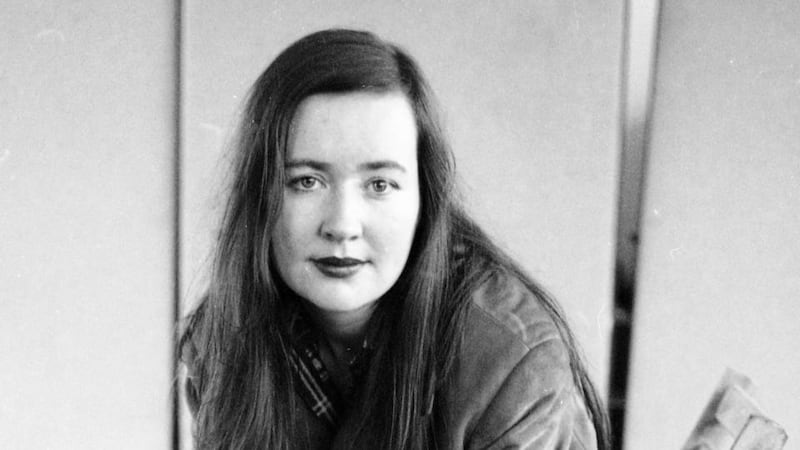It does not seem accidental that Marina Carr grew up beside water, specifically Pallas Lake, outside Tullamore, in Co Offaly, where she was born in 1964. Water is everywhere in her plays: her landscape is both literally and metaphorically fluid. Her midlands' ground is soft underfoot, boggy and unstable, bounded by lakes and rivers. And the language of her characters flows with the same lazy meander, words oozing into each other until the distinctions between them are blurred and all the hard, clear consonants are drowned.
At the start of Portia Coughlan, which opened at the Peacock Theatre in Dublin in March 1996, a factory owner slips home in the morning to give his wife, the eponymous Portia, a present for her 30th birthday, to find her already working her way through a bottle of brandy. He says, "Tin a clache i'tha mornin' an ya'are ah ud arready." The sounds people make in Carr's plays have no sharp edges, and the people themselves struggle to find definition.
Portia Coughlan has some relationship to a play also set in a watery place, Shakespeare's The Merchant of Venice. Portia shares her name with the heroine of that play and, like her, lives in a place called Belmont. She, too, has three suitors: her husband, Raphael, her lover, Damus Halion, and the barman of the High Chaparral, Fintan Goolan.

But there the parallels end. Marina Carr’s inspiration is much more in the Greeks than in Shakespeare: although the original Portia is able to shape her own fate, Carr’s version is already doomed. The water will claim her. Carr places the chronological ending of the action, Portia’s suicide by drowning, in the middle of the play, cutting off all hope.
What we watch thereafter is a kind of psychic autopsy, a cold delving into the soft tissues of Portia’s mind to discover and pluck out the cause of death in the knotty, incestuous society of a rural Ireland that has seldom been painted in such dark colours.
This is essentially a ghost play, and as such it points to the continuing resonance of the Gothic tradition in modern Irish art. Portia and her twin brother, Gabriel, are still locked together, as they were in the womb, even though he drowned himself in the river 15 years before, on their 15th birthday. Portia was supposed to go with him; Gabriel will haunt her until she fulfills her side of the bargain.
And in that awful psychic entanglement the borders between the living and the dead, between male and female, between the born and the unborn, and between the past and the present dissolve in the river’s interminable flow.
The dead boy and the living woman are the same person, a single personality that has been sundered and can be made whole again only by Portia’s death.
Fate is everything in Carr's work: cycles play out over the generations, and even love, in plays like The Mai and Woman and Scarecrow, is a kind of doom, implacable and irresistible.
Carr’s women are strong and fierce: the terrible Medea is a touchstone. But they are also trapped. There is a paradox in her plays: women have seldom been given such power on the Irish stage, but neither have they been given such utter powerlessness.
Yet if Carr's drama has all the pessimism of the Greeks, it also has the grandeur. The strange midland language acquires a poetic force. The great forces of sex and death, of doom and rage, are unleashed. Her stages are stalked by angels and demons and by figures that seem to come in part from folklore and in part from the deep recesses of the psyche. Like John B Keane (whose play Sive is the entry in this series for 1959), her Ireland is a pagan place.
Modern Ireland in 100 Artworks is a collaboration between The Irish Times and the Royal Irish Academy. Find out more at ria.ie

















